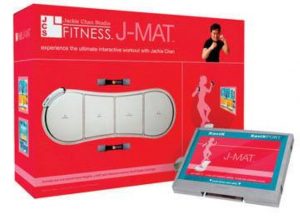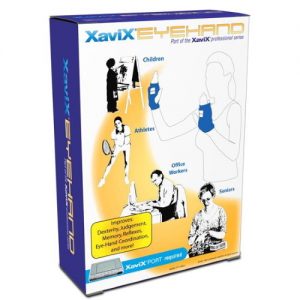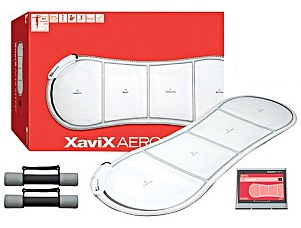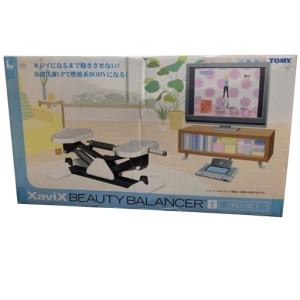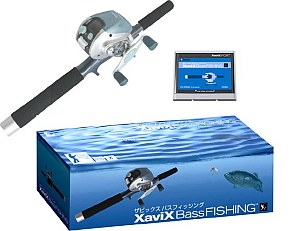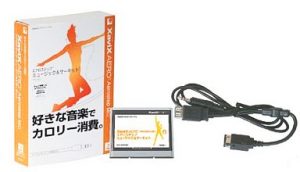|
History
In 1995, after being employed by Nintendo for more than 16 years, Katsuya Nakagawa decided to leave Nintendo. At that time, Nintendo was going through a rough patch. The stock was at an all-time low and Nintendo was preparing to enter the new console generation (dominated by CD-based console such as 3DO, Saturn and the PlayStation) with yet another cartridge-based system. Katsuya Nakagawa wanted to renew with the innovation that once stood in the middle of the Nintendo value and left the company to start its own company.
Reaching out to old colleagues, Katsuya Nakagawa was able to assemble a team of eight other individuals, many of which had worked on the Famicom, such as himself. The nine individuals created the SSD COMPANY LIMITED. Under a motto of “Contribute First Above All Else,” SSD, which stands for Shinsedai (新世代 or”new generation” in English), was established with the aim of utilizing specialty digital technology to the benefit of society. In their first years, SSD developed and manufactured numerous licensed products as pioneers of the motion-controlled TV games. These games were then sold by various other companies and never under an SSD brand. But in 2003, SSD decided to launch their own console using their own technology.
Their first success was a Dragon Quest TV game (剣神ドラゴンクエスト 甦りし伝説の剣) which was a huge hit in Japan. Seeing an opportunity to release a motion-controlled system that would feature sports and fitness titles, SSD unveiled their technology in Las Vegas at the Consumer Electronics Show on January 8, 2004.
The name XaviX come from the “unknown” symbol X, followed by A for Audio, V for Video, I for Interactive and finally X again.
The goal was not to compete against the current generation of video game console of the time, but instead create a unique experience by combining exercises and video games. With this in mind, SSD didn’t even try to compete graphically wise, choosing instead to focus on the experience. Although the Wii, which released a full two years after the XavixPORT was very successful using the same strategy, at the time, the strategy was far from being proven.
SSD already had established four pillars for the company : XaviX Games, XaviX Home, XaviX Education and XaviX Entertainment, but, for the launch, chose to concentrate on the XaviX Games segment.
Release
The system was released in the United States in August 2004 for $79.99 alongside 3 games : Baseball, Bowling and Tennis, all retailed at $49.99. On January 6, 2005, SSD announced that Jackie Chan would be the first international licensee of the XavixPort System, with the release of two new games : Jackie Chan Studio Fitness: PowerBoxing and Jackie Chan Studio Fitness: J-MAT.
One of the XaviXPORT consoles most interesting features were its ability to improve over time. Like the GIMINI 8600 concept did in 1978, the CPU that holds the XaviX technology was embedded into each cartridge instead that directly in the console itself. For example,the 3 launch titles (XaviX Tennis, XaviX Bowling and XaviX Baseball) used their original XaviX Multiprocessor. This proprietary chip contained an 8-bit CPU (6502) at 21 MHz, a picture processor, sound processor, DMA controller, etc. XaviX Golf and XaviX Bass Fishing, both used the upgraded Super XaviX. This new chip is said to sport a 16-bit high central processing unit (65816) at 43 MHz. SSD also created a 32-bit RISC processor version of their chip called the XaviX II, which had 3D capabilities.
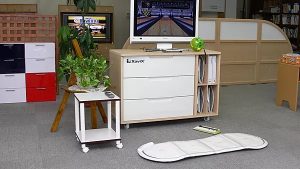 SSD decided to expand the reach of their technology into the health care segment with two projects. The first one was the Hot Plus services. This service was to provide hospital, nursing home and rehabilitation establishments the possibility to rent a special XaviXPORT system that came bundled with accessories such as the bowling ball and the Step Sensor. The services allowed for the uses of 32 programs to support daily recreation and rehabilitation which can be used by small groups or large groups. The facilities using the services have reported an increase in the Activities of Daily Living (ADL) of the elderly. As large groups could be supervised by a few staff during these activities, it also leads to more availability of the facility’s staff to perform other tasks during these activities period.
SSD decided to expand the reach of their technology into the health care segment with two projects. The first one was the Hot Plus services. This service was to provide hospital, nursing home and rehabilitation establishments the possibility to rent a special XaviXPORT system that came bundled with accessories such as the bowling ball and the Step Sensor. The services allowed for the uses of 32 programs to support daily recreation and rehabilitation which can be used by small groups or large groups. The facilities using the services have reported an increase in the Activities of Daily Living (ADL) of the elderly. As large groups could be supervised by a few staff during these activities, it also leads to more availability of the facility’s staff to perform other tasks during these activities period.
The second service was the Brain club. Developed with Kubota Sensei, Professor Emeritus of the Kyoto University and Cerebral Scientist alongside Tatsuo Yamada, Dementia specialists, the Atama Club was a series of training of the prefrontal cortex of the brain based on the latest science around brain theory. The principle was simple : the prefrontal cortex is a very important part of the brain, which can atrophy if not used. SSD developed a game-like program that stimulates and train the brain. Simple programs with easy-to-understand rules were designed using only characters and figures. Up to 20 people can participate at the same time using of the XaviXMobile (see image on the right). The cartridges for the Brain Club were able to store the result locally. The data could then be deleted or uploaded to the Brain Club data management website which allowed for the data to be edited, aggregated and printed.
Demise
On November 19, 2006, the Nintendo Wii released worldwide with a similar premise as the XaviXPORT. The system was an instant hit and completely obliterated the XaviXPORT sales. To add insult to injuries, the console, released by their ex-employers, launched in the U.S. alongside Wii Sport, a sports compilation that included almost all XaviX released of the times : tennis, baseball, bowling, golf, and boxing. Although the release of the Wii was devastating for Xavix, this also created an opportunity in Europe. The success of the Wii showed it was possible to successfully gamify exercising and many companies started looking at integrating some kind of gamification in their products. In this context, SSD reached a deal with Decathlon S.A. is a French sporting goods retailer, to release their own version of the XaviXPORT called the Domyos Interactive System. The Domyos Interactive System has its own set of unique games which are completely different than the XaviXPORT release. Both systems are regions locked, so games from one system cannot be played on the other.
SSD continued to release a few games for the XaviXPORT, but they were more focus on the lifestyle than sports. SSD released their last game for the system in 2008. By 2012, the XavixPORT was still available in Japan, Hong Kong, Korea, and the US, but the company had abandoned the development a long time ago and were just liquidating stock. By 2013, the company had ceased all activities.
Games
Over its lifespan, SSD had released 10 games in North America.
In Japan, SSD released 15 games. All North American games were also released in Japan, but Japan also a few exclusives. Two of these exclusive were released by companies other than Xavix. The Xavix Beauty Balancer was released by Tomy while Xavix D3 was released by Descente Health Management Laboratory.
Other Software
Seven other software were released on cartridges. Questionnaire, 4 Choices Quiz and Brain Club Vol 1 to Vol 3 were all released as part of the Brain Club. As such they were not commercially available but instead loaned to medical institution that participated in the Brain Club research. The Kinta’s Great Adventure was a promotional item for the radio show “The more I listen to Tsuboinorio”. Finally, the Ask, Listen, Learn: Kids and Alcohol Don’t Mix game was a game developed for the Century Council to promote drinking responsively.
 |  |  |  | ||||
| Questionnaire アンケート Video | 4 Choices Quiz 4択クイズ Video | Brain Club Vol 1 アタマ倶楽部vol 1 Video | Brain Club Vol 2 アタマ倶楽部vol 2 Video | ||||
 |  |  | |||||
| Brain Club Vol 3 アタマ倶楽部vol 3 Video | Kinta’s Great Adventure 金太の大冒険 Video | Ask, Listen, Learn: Kids and Alcohol Don’t Mix Video |
Unreleased Games
XaviX Table Tennis is the only known cancelled title for the XaviXPort.
Accessories
Ten officials accessories were released for the XaviXPort:
Video
Here’s a video that demonstrates the use of the XaviX Hot Plus Services in a nursing home.







